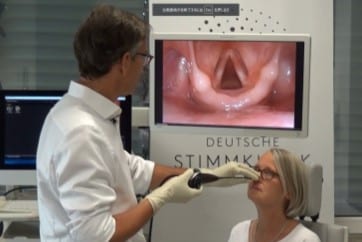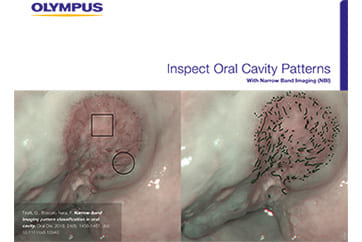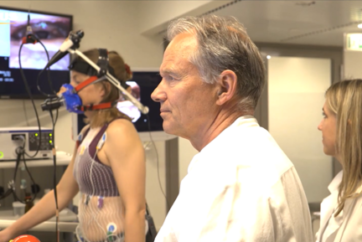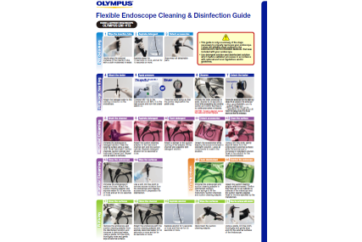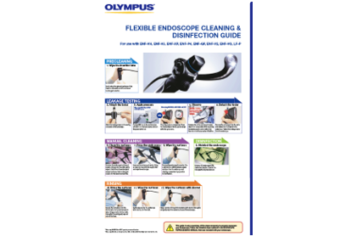Transoral Rigid Laryngoscopy – Handling the Endoscope
Left Hand: Holding the Patient’s Tongue
We recommend the use of gloves when holding the patient’s tongue.
Ask the patient to stick out their tongue. Grip the tongue tip by placing your thumb on the superior surface and the middle finger underneath.
Be careful not to hurt the patient by pressing the tongue against the lower incisors or by pulling too much.
Keep finger contact with the patient’s cheek or chin using either your left index or little finger in order to control the position of the patient’s head.
There are various ways to use the left index finger.
Use a cotton gauze square rather than paper as it has better gripping properties.
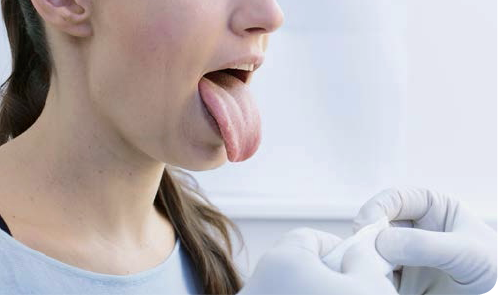
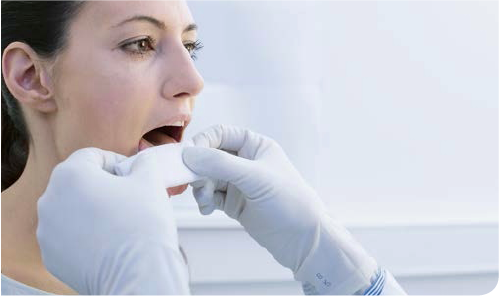
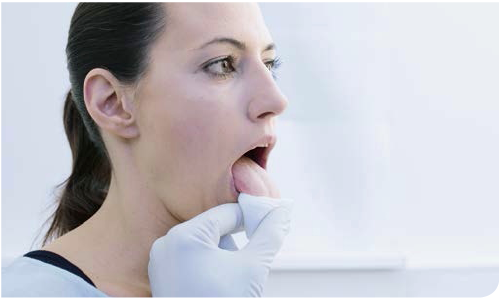
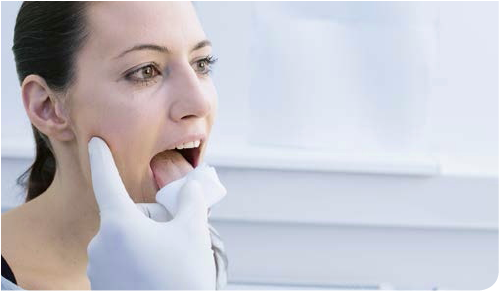
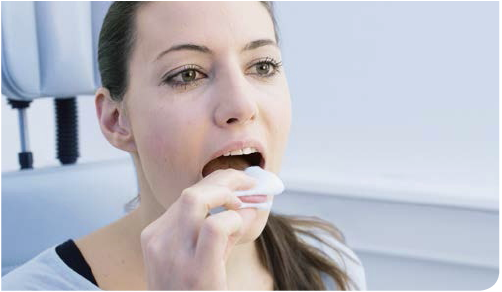
Use of the Left Hand While Inserting the Endoscope
There are various ways in which the left hand can be used while inserting the endoscope into the oral cavity.
You can control the position of the patient’s head (A, B, C) and their mouth opening (A, B) with your left index finger.
You can also control the position of the patient’s head by using your little finger to lift the patient’s chin (D, F).
Additionally, you can stabilize the position of the endoscope with your left index finger (D, E, F).
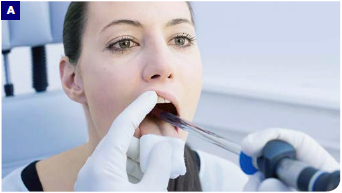
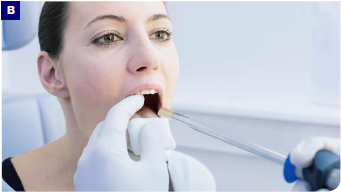
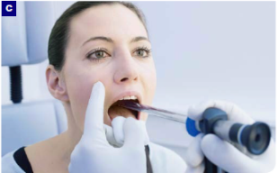
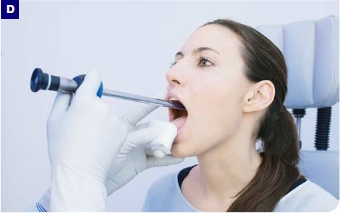
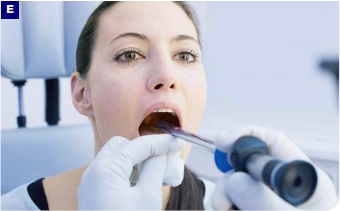
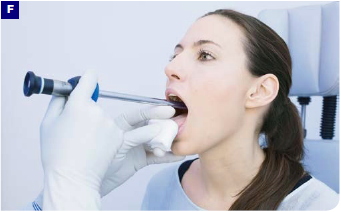
Right Hand: Inserting the Endoscope
The position of the right hand varies, depending on the different handgrips which can be used with the camera and endoscope.
By rotating the endoscope sidewards during intraoral passage you can avoid touching the tongue base and consequently blurring the lens. Simply rotate the endoscope downwards when its tip is behind the uvula.
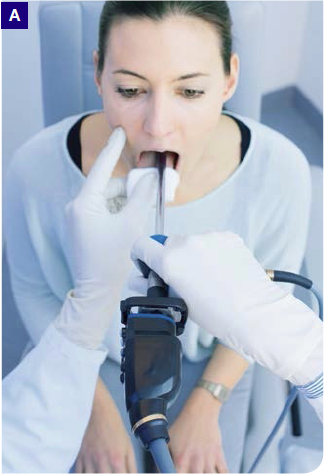
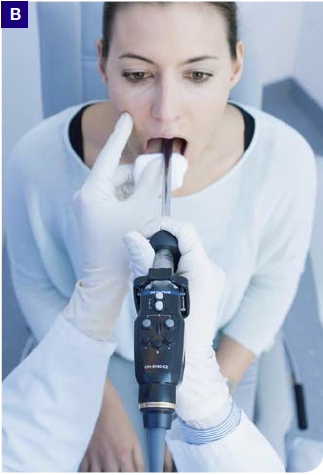
A, B): Holding the endoscope from below,
examiner sitting.
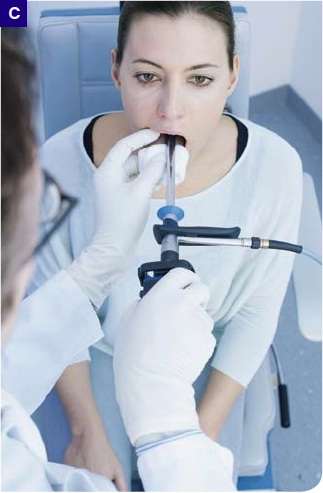
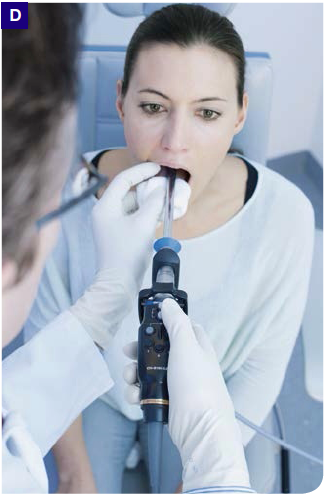
The Examiner’s Head Position
When the endoscope has advanced through the oral cavity towards the oropharynx, the examiner has to change his direction of view from the patient’s mouth to the monitor:
While entering the mouth, the position of the endoscope, the elevation of the velum, and the opening of the oropharynx are controlled by looking into the patient’s mouth.
Ask the patient to breathe through the mouth.
When the endoscope tip passes the uvula, i.e. the faucial pillars, the rest of the endoscopy is visualized on the monitor screen.
Pay attention to the position of the monitor and the height of the chairs – you should be able to see both the patient’s mouth and the monitor with a minimal am ount of head turning.
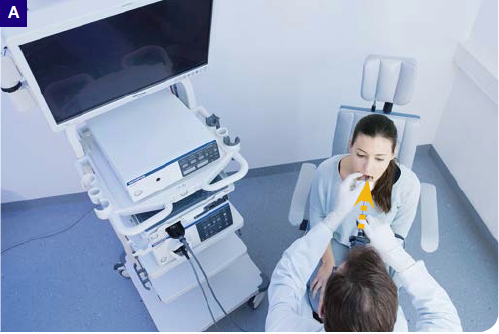
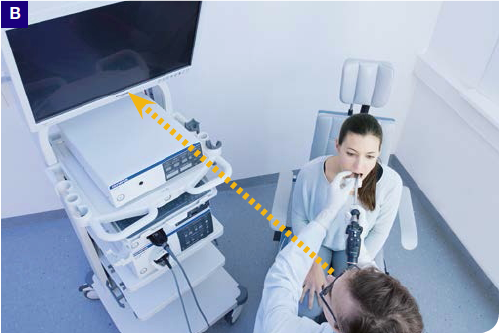
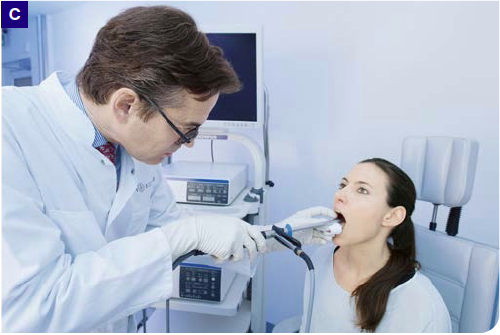
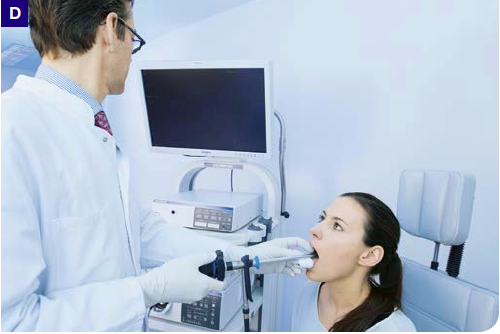
A) Examiner sitting, C) Examiner standing. Intraoral passage: The endoscope is rotated to the side and the endoscopist is watching the patient.
B) Examiner sitting, D) Examiner standing. When the tip of the endoscope reaches the oropharynx, rotation backwards is completed and the endoscopist turns and continues the examination using the monitor image.
- Content Type

